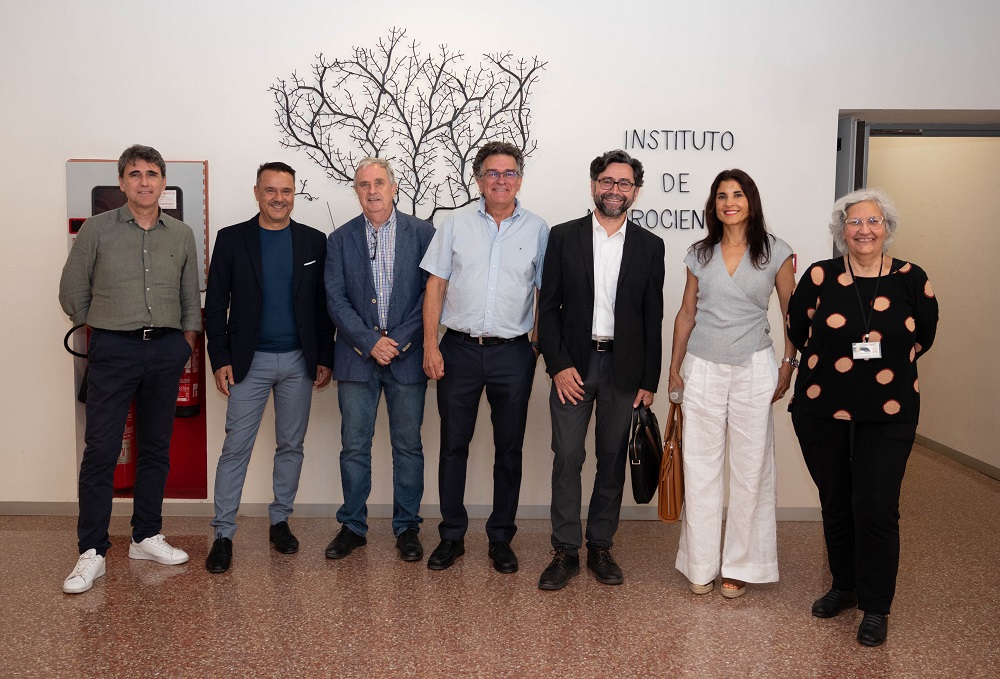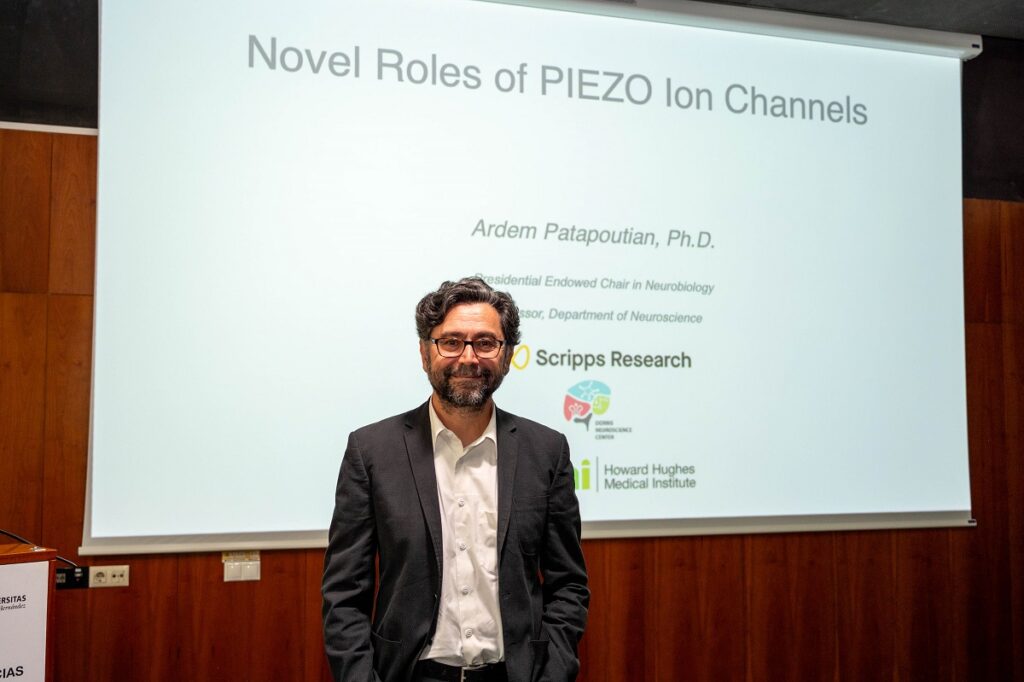The Institute for Neurosciences CSIC-UMH welcomes Ardem Patapoutian, Nobel laureate in Physiology or Medicine 2021
2 de June de 2025
On the occasion of his participation as a jury member for the Rei Jaume I Awards, Ardem Patapoutian, recipient of the 2021 Nobel Prize in Physiology or Medicine for his discovery of molecular sensors for touch, visited the Institute for Neurosciences (IN), a joint center of the Spanish National Research Council (CSIC) and the Miguel Hernández University (UMH) of Elche. The visit also included neurobiologist Erika Pastrana, Editorial Director at Nature Research Journals and member of the Rei Jaume I Awards jury. They were welcomed by the Vice-rector for Research and Knowledge Transfer at UMH, Ángel Carbonell; the CSIC Delegate in the Valencian Community, Juan Fuster; the IN’s director, Juana Gallar; and Félix Viana, director of the scientific program Neurobiology of Pain and Inflammation at the IN.

Photo:visit of Ardem Patapoutian to the institute of neurosciences CSIC-UMH
Patapoutian, who had already visited the IN in 2023, is a researcher at the prestigious Howard Hughes Medical Institute and conducts his work at the Scripps Research Institute in La Jolla, California. During his visit, the Nobel laureate delivered a special seminar on how cells detect mechanical stimuli through PIEZO ion channels, which are key to the sense of touch and other essential physiological functions.
Following the seminar, Patapoutian held an informal meeting with PhD students at the IN and later met with researchers working in his field of expertise. “For IN researchers studying the cellular and molecular mechanisms of somatosensation and mechanobiology, this visit is a unique opportunity to discuss ongoing work with a leading figure in the field and to learn about the latest developments from his laboratory,” noted Viana, who coordinated the visit.
The IN’s director emphasized that it was a privilege to benefit from the insight and experience of such a distinguished Nobel laureate: “The IN community feels deeply honored and excited to welcome Ardem Patapoutian once again. His presence is an invaluable source of inspiration, especially for early-career scientists. We are sincerely grateful for his generosity in sharing his time and knowledge, strengthening our ties and fostering an environment of excellence in research.”
Nobel Prize in Physiology or Medicine 2021
 Ardem Patapoutian (Lebanon, 1967) is an American scientist of Armenian descent. He emigrated to the United States in 1986, where he earned a degree in Biology from the University of California, Los Angeles (UCLA). He later obtained his PhD from the California Institute of Technology (Caltech), under the supervision of Barbara Wold. From 1996 to 2000, he carried out postdoctoral research at the University of California, San Francisco (UCSF), where he worked with neuroscientist Lou Reichardt, also known for his mountaineering achievements, including ascents of K2 and Everest.
Ardem Patapoutian (Lebanon, 1967) is an American scientist of Armenian descent. He emigrated to the United States in 1986, where he earned a degree in Biology from the University of California, Los Angeles (UCLA). He later obtained his PhD from the California Institute of Technology (Caltech), under the supervision of Barbara Wold. From 1996 to 2000, he carried out postdoctoral research at the University of California, San Francisco (UCSF), where he worked with neuroscientist Lou Reichardt, also known for his mountaineering achievements, including ascents of K2 and Everest.
Since 2000, Patapoutian has pursued his academic career at the prestigious Scripps Research Institute (La Jolla, USA), where he currently holds the Presidential Chair in Neurobiology. His work has been instrumental in understanding how human cells perceive physical stimuli such as pressure or stretch. He pioneered the identification of molecular temperature sensors, and in 2010, his lab discovered a new family of mechanosensitive ion channels named “PIEZOs.” These proteins are essential for the sense of touch and play a key role in physiological functions such as blood pressure regulation.
In recognition of his scientific career, Patapoutian has received numerous honors, including the 2021 Nobel Prize in Physiology or Medicine (shared with David Julius), the Kavli Prize in Neuroscience (2020), the BBVA Foundation Frontiers of Knowledge Award (2021), and the Order of Merit of the Republic of Lebanon (2021), among others. He is also an elected member of several prestigious scientific academies, including the U.S. National Academy of Sciences and the American Academy of Arts and Sciences.
Source: Institute for Neurosciences CSIC-UMH (in.comunicacion@umh.es)

 Español
Español